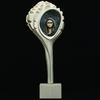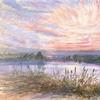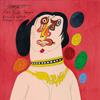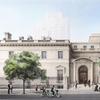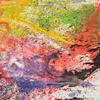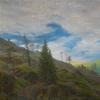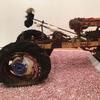THE NOGUCHI MUSEUM TO HONOR JASPER MORRISON & YOSHIO TANIGUCHI WITH THE SECOND ANNUAL ISAMU NOGUCHI AWARD
- NEW YORK, New York
- /
- November 26, 2014

The Noguchi Museum is pleased to announce that designer Jasper Morrison and architect Yoshio Taniguchi will receive the second annual Isamu Noguchi Award, given to recognize kindred spirits in innovation, global consciousness, and Japanese/American exchange. Motohide Yoshikawa, Ambassador of Japan to the United Nations, will present the award during a special ceremony at The Noguchi Museum’s annual Spring Benefit on Tuesday, May 19, 2015. This event is part of a year of celebratory programming in honor of the 30th anniversary of the Museum’s founding by Isamu Noguchi.
Jenny Dixon, Director of The Noguchi Museum stated, “We are thrilled to present the second annual Isamu Noguchi Award to Jasper Morrison and Yoshio Taniguchi, whose visionary work and extraordinary contributions in the fields of design and architecture exemplify Noguchi’s lifelong commitment to world citizenship and the practice of art with a social purpose.”
During a lifetime of artistic experimentation that included everything from sculptures and gardens to lighting designs and playgrounds, Isamu Noguchi (1904 - 1988) set a new standard for the integration of the arts. He was an avid collaborator, developing projects and friendships with some of the most important creative people of the 20th century, including Diego Rivera, Martha Graham, Buckminster Fuller, John Cage, Kenzo Tange, and Louis Kahn, among others. Contemporary artists today—from visual artists, designers, and architects, to dancers and musicians—continue to engage with and find inspiration in the wellspring of Noguchi’s diverse oeuvre.
Jasper Morrison is one of the world’s most influential industrial designers. His talent for creating objects that are defined by their simplicity and fit seamlessly within their surroundings, are just two of his many affinities with Isamu Noguchi. Morrison’s aesthetic, in particular his quiet respect for materials, is often described as Japanese, but like Noguchi, he is profoundly and purposefully cosmopolitan. He is as comfortable with the stonework of Italian marble quarries and the traditional wood and paper industries of Japan, as he is with the high-precision metal forming and electronics that he employs in his collaborations with companies such as Vitra, Alessi and Samsung, Morrison has also developed designs with Cappellini, Flos, Muji, Camper, Maharam and Emeco, and his designs have appeared in major museums, galleries and biennials such as Documenta 8; The DAAD Gallery, Berlin; and the Tate Modern, London. Morrison’s 1999 Air Chair—a light, elegant, durable, and relatively inexpensive molded chair made from a single piece of plastic using gas injection technology—is indicative of his openness to new materials and technologies. In another of his commonalities with Noguchi, Morrison’s designs are extraordinarily spatially aware and take into consideration all circumstances that they seek to affect. He is the rare designer whose work combines art with industry in the clear service of making a better world.
Yoshio Taniguchi was introduced to Noguchi at a young age by his father, Yoshiro (1904–1979), who was also a prominent architect and collaborated with the artist on the Shin Banraisha, a room and garden located on the ground floor of a building at Keio University. Noguchi was close friends with both father and son, and became an avuncular mentor to the younger Taniguchi. After establishing his own architecture firm in 1979, Yoshio Taniguchi collaborated with Noguchi on his first museum project in 1984: the Ken Domon Museum of Photography, Japan’s inaugural photography museum that houses the collection of the renowned Japanese photographer. Taniguchi designed four other major museums in Japan before redesigning the Museum of Modern Art, New York, in 2004. Since then, he has worked on significant projects in Switzerland, the United States, and most recently on the Heisei Chishinkan Wing, a new addition to the Kyoto National Museum, Japan. Among a handful of global architects known for taking an understated approach to museum design, Taniguchi excels in creating spaces with a humility and elegance that allows the art contained within to stand on its own. A master of imbuing his projects with a humane and universal refinement, he credits his sensitivity to the relationship between objects and spaces in part to his friendship with Noguchi. This quality of spatial serenity is highly evident in Noguchi’s own designs for his homes, studios, and of course in The Noguchi Museum. With compatriots such as Tadao Ando and Arata Isozaki— also friends of Noguchi’s—Taniguchi has been an enormously important conduit for Japanese aesthetics in the West.
About the Isamu Noguchi Award
Established in 2014 by The Noguchi Museum, the Isamu Noguchi Award is given annually to an individual or individuals who share Noguchi’s commitment to innovation, global consciousness, and Japanese/American exchange. Lord Norman Foster and Hiroshi Sugimoto were the first recipients of the award. Created by Peter Carlson, Noguchi’s fabricator for many years, the award was inspired by Noguchi’s iconic public sculpture Red Cube of 1968, located in the plaza of 140 Broadway in New York City’s Financial District.
About Jasper Morrison
Born in London in 1959, Jasper Morrison is a celebrated industrial designer who uses the latest technologies to mass-produce functional yet beautiful everyday objects. He graduated in Design from Kingston Polytechnic Design School, London, in 1982 and then attended the Royal College of Art for postgraduate studies. Upon graduation he opened his Office for Design in 1986. Morrison established himself in the design world with two early projects – the room installations, "Reuters News Center" for Documenta 8 in Kassel (1987) and "Some New Items for the Home" at the DAAD Gallery in Berlin (1988). Since the mid 1980s he has designed a remarkable variety of highly successful products: from chairs and tables to tableware, toasters and telephones, to bus stops and watches. In 1995 his office was awarded the contract to design the new Hanover Tram, the largest European light rail production contract of its time. The first vehicle was presented to the public in June 1997 at the Hanover Industrial Fair, and awarded the iF Transportation Design Prize and the Ecology award. In realizing his designs, Morrison has worked with leading manufacturers in Europe including Italian lighting specialists Flos and houseware brand Alessi, and furniture producers Cappellini in Italy and Vitra of Switzerland; US brands Maharam and Emeco; Japanese brands such as Muji; and technology companies Samsung and Sony. In 2006 Morrison collaborated with Japanese designer Naoto Fukasawa on the groundbreaking exhibition “Super Normal” at Axis Gallery, Tokyo. It subsequently toured to London, New York and Milan, and inspired the opening of the Jasper Morrison Shop beside his studio in London. Several books and numerous exhibitions have confirmed Morrison's status, and the Museum of Modern Art in New York and the Victoria and Albert Museum in London are among the museums to have collected his designs. Jasper Morrison's first-ever retrospective exhibition will open at the Grand-Hornu in Belgium in May 2015. Jasper Morrison Ltd currently has offices in London, Tokyo and Paris.
About Yoshio Taniguchi
Born in Tokyo in 1937, Yoshio Taniguchi is one of Japan’s most celebrated architects known for his sleek structures that champion minimalism over ostentatious design. The son of Yoshiro Taniguchi, a prominent member of the modern architecture movement in Japan, Taniguchi earned his undergraduate degree in mechanical engineering at Keio University, Tokyo, and then studied architecture at Harvard University’s Graduate School of Design in 1964. After graduating from Harvard, Taniguchi returned to Japan in 1965 to apprentice under Kenzo Tange, one of the most influential figures of Japanese 20th-century architecture. In 1979 Taniguchi established his own practice, Taniguchi and Associates, and went on to complete his breakthrough work just four years later – the Ken Domon Museum of Photography, Japan’s first dedicated photography museum. Following this award-winning project, Taniguchi worked on several other major museum commissions including the Marugame Genichiro-Inokuma Museum of Contemporary Art, Marugame, Japan (1991); the Toyota Municipal Museum of Art, Toyota, Japan (1995); and the Gallery of Horyuji Treasures at Tokyo National Museum, Japan (1999). In 1997 he won a competition to redesign the Museum of Modern Art (MoMA), New York, beating out several other top contenders including Rem Koolhaas and Herzog de Meuron. Completed in 2004, the MoMA redesign marked Taniguchi’s first building project outside of Japan. More recent projects include the Asia House for the Texas branch of the Asia Society (2011); the Novartis Headquarters in Basel, Switzerland (2010); and the Heisei Chishinkan Wing, the Kyoto National Museum, Japan (2014).
The Noguchi Museum
Occupying a renovated industrial building dating from the 1920s, The Noguchi Museum, founded by the artist for the display of his work, comprises ten indoor galleries and an internationally celebrated outdoor sculpture garden. Since its founding in 1985, the Museum—itself widely viewed as among the artist’s greatest achievements—has exhibited a comprehensive selection of sculpture in stone, metal, wood, and clay, as well as models for public projects and gardens, dance sets, and Noguchi’s Akari Light Sculptures. Thought-provoking and frequently changing installations of the permanent collection together with the Museum’s diverse special exhibitions offer a rich, contextualized view of Noguchi’s work and illuminate his influential legacy of innovation. For more information: www.noguchi.org.
Contact:
Stephanie MarkovicFitz & Co.
347-628-4688
stephanie@fitzandco.com



